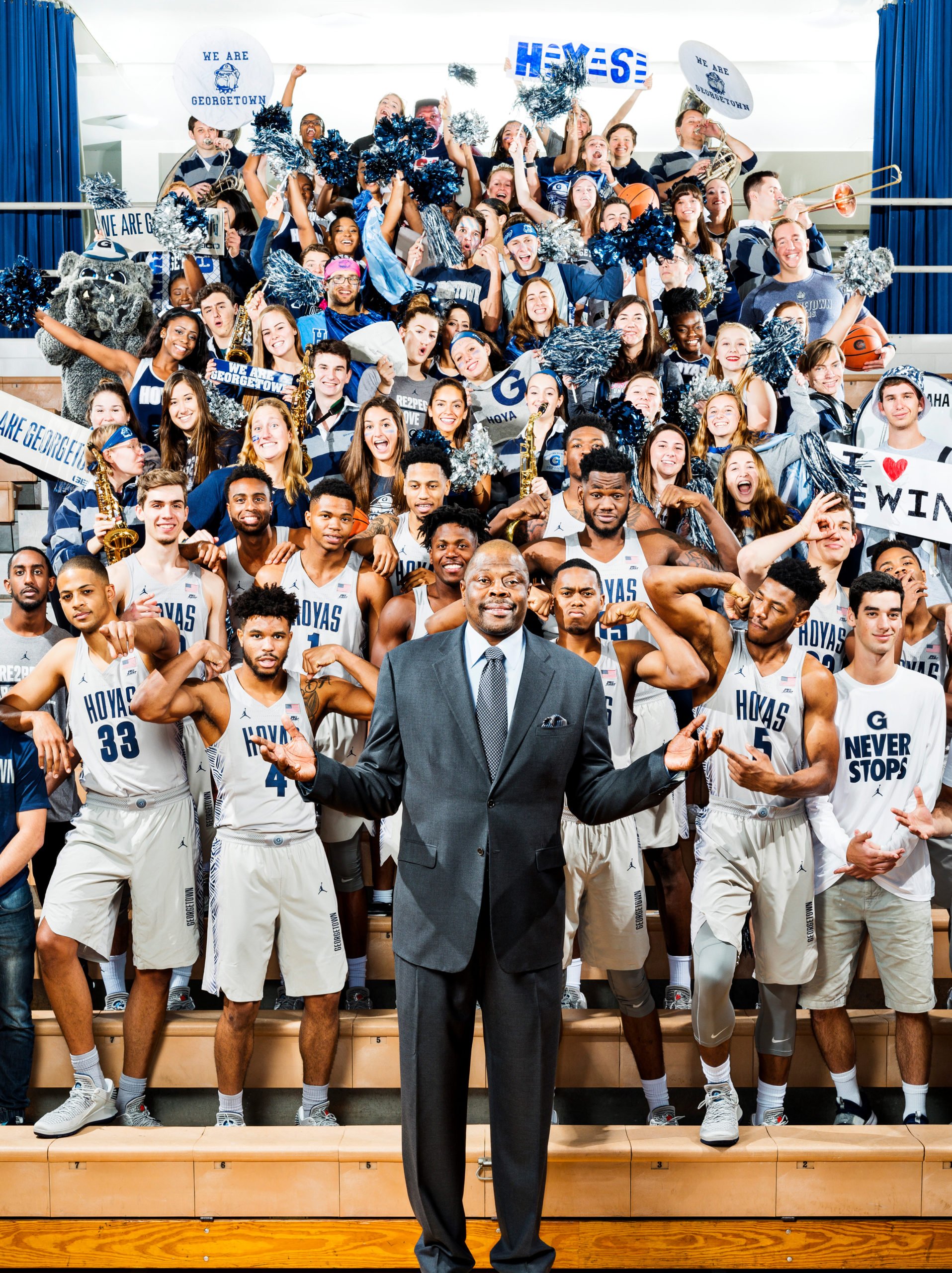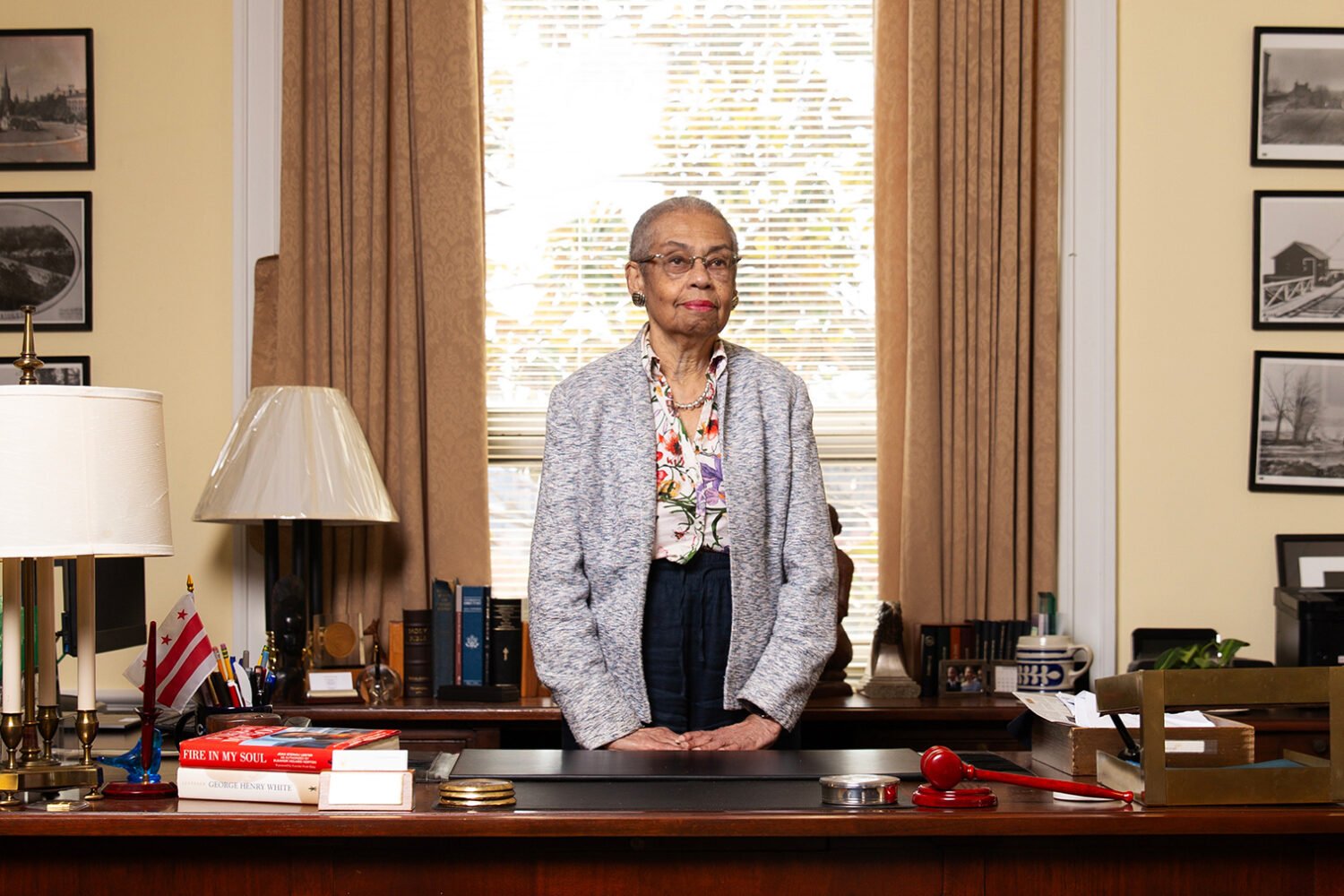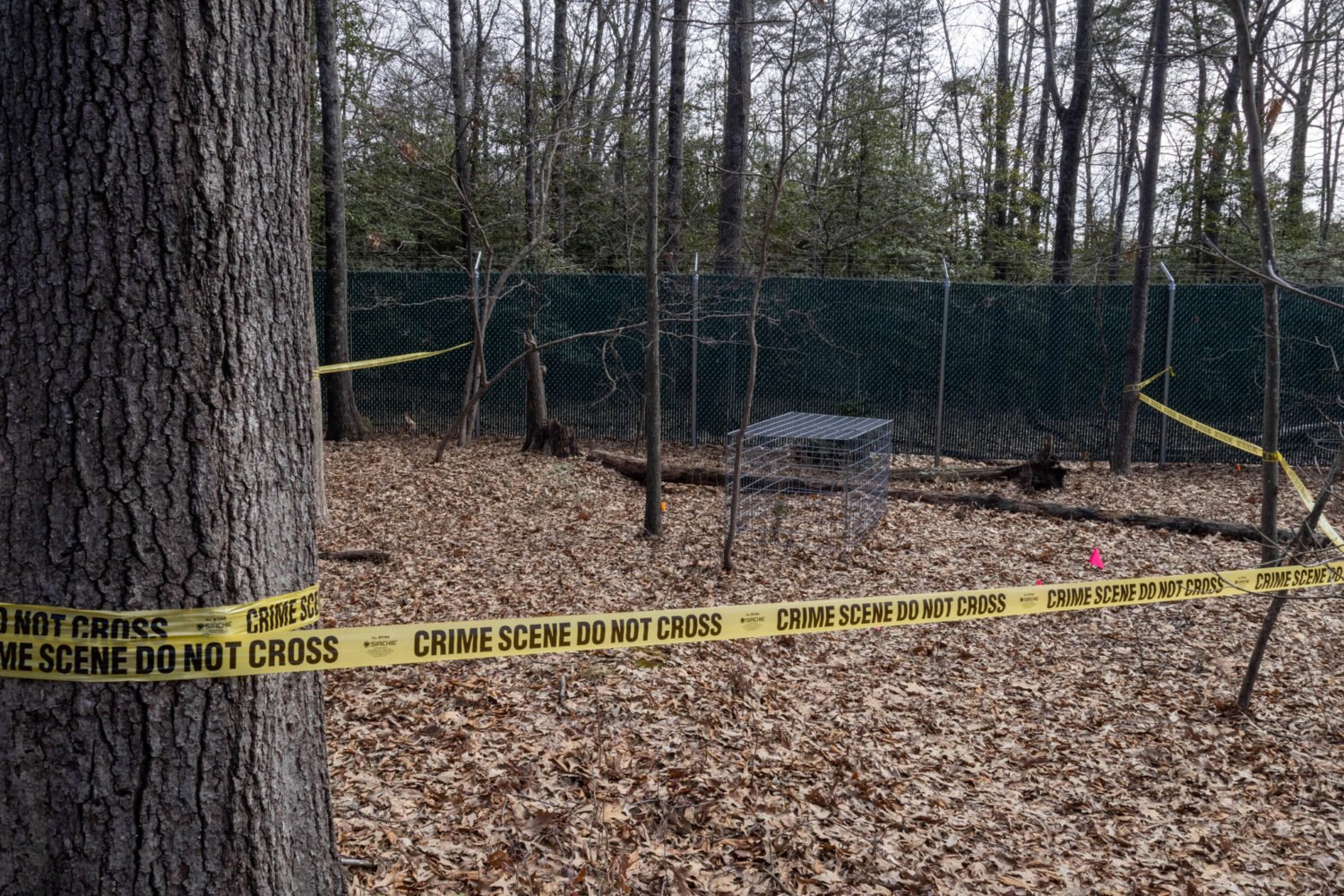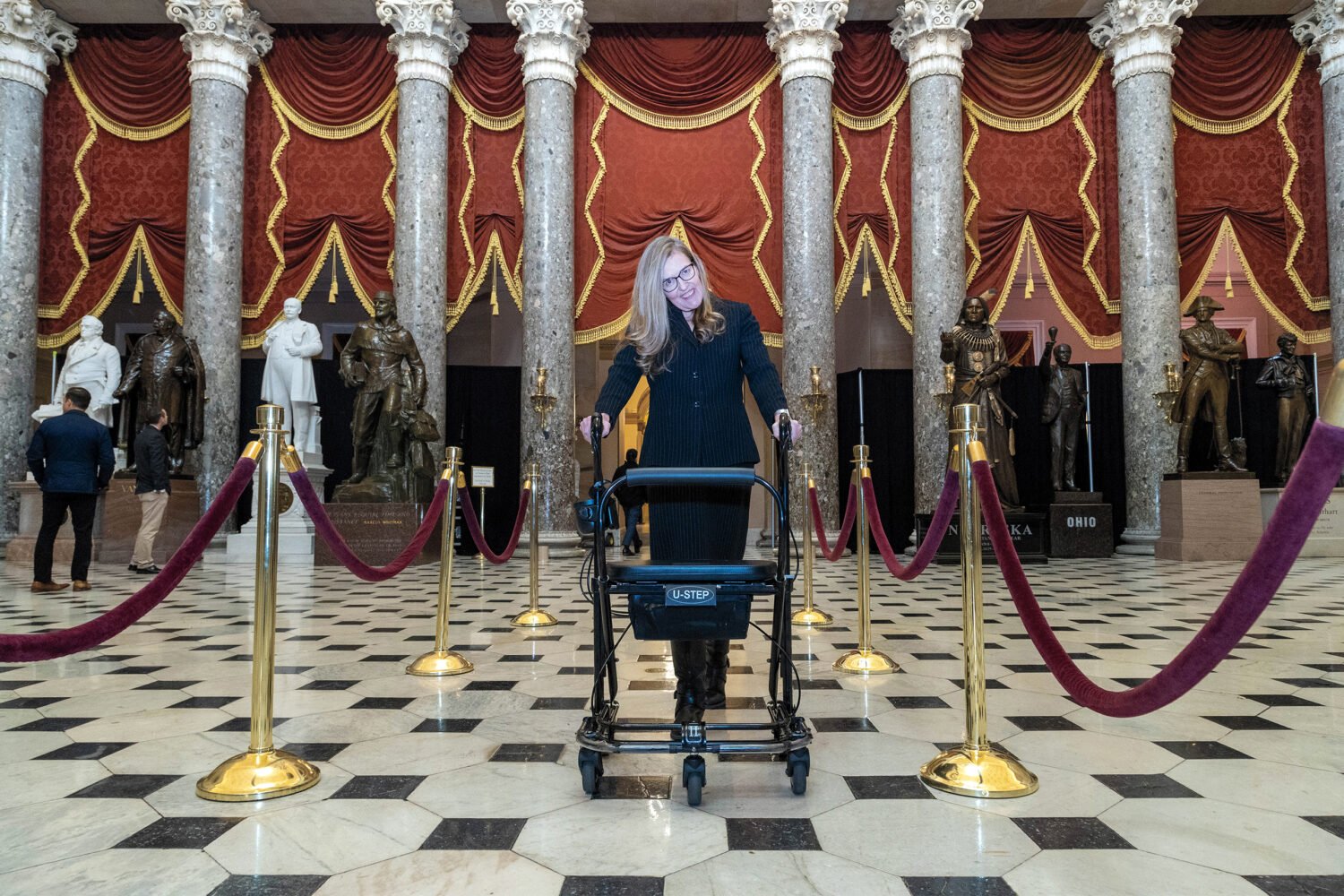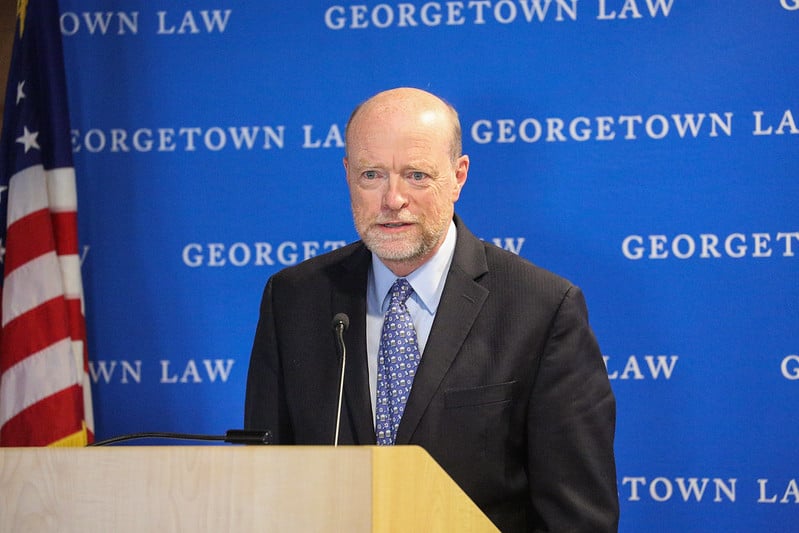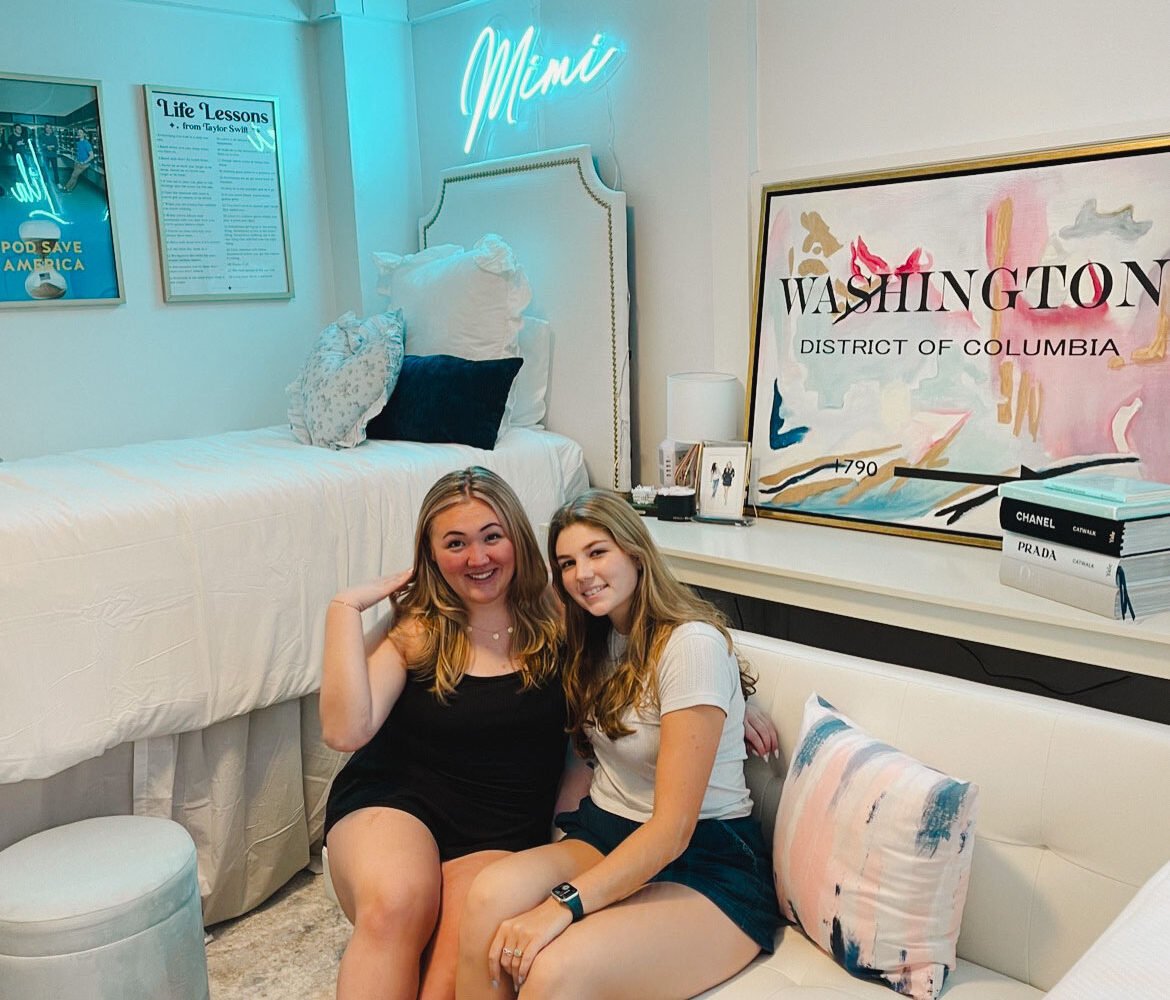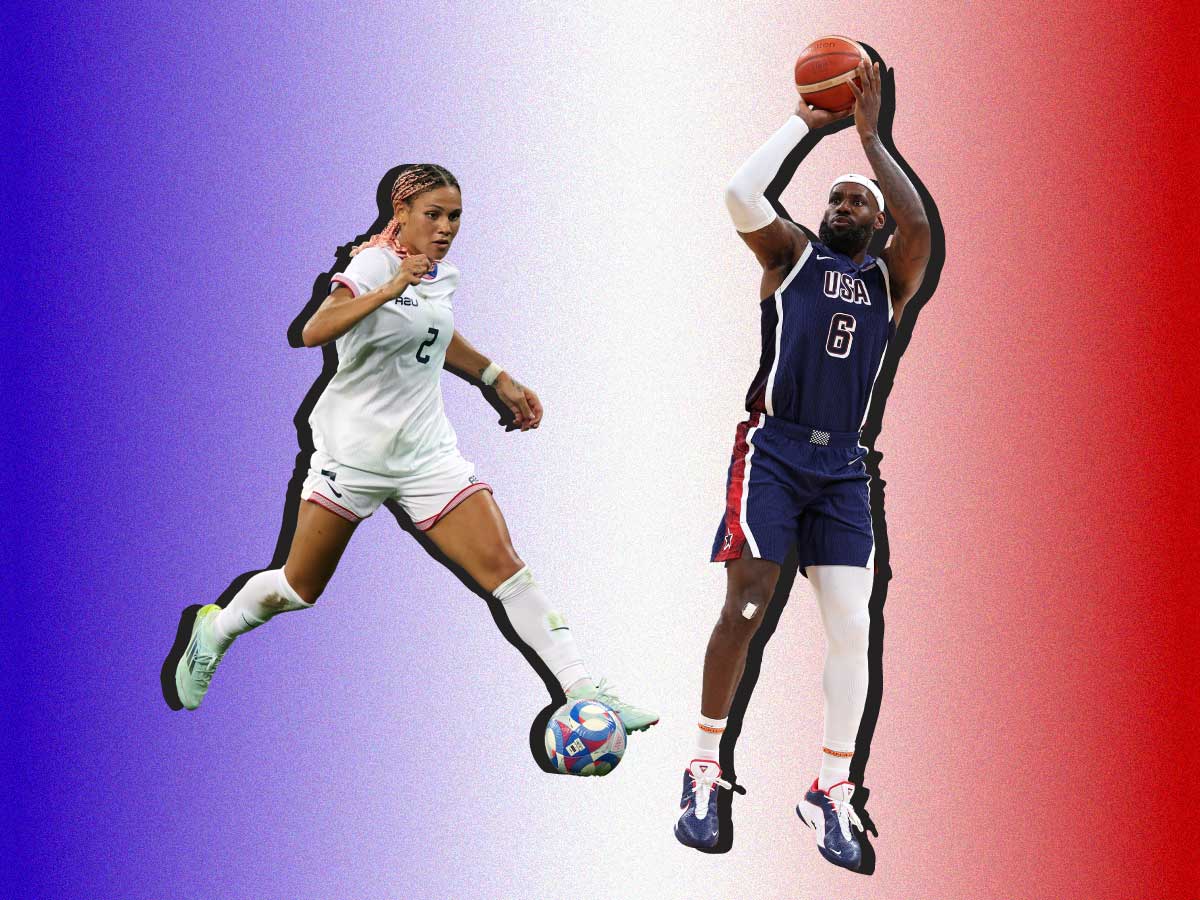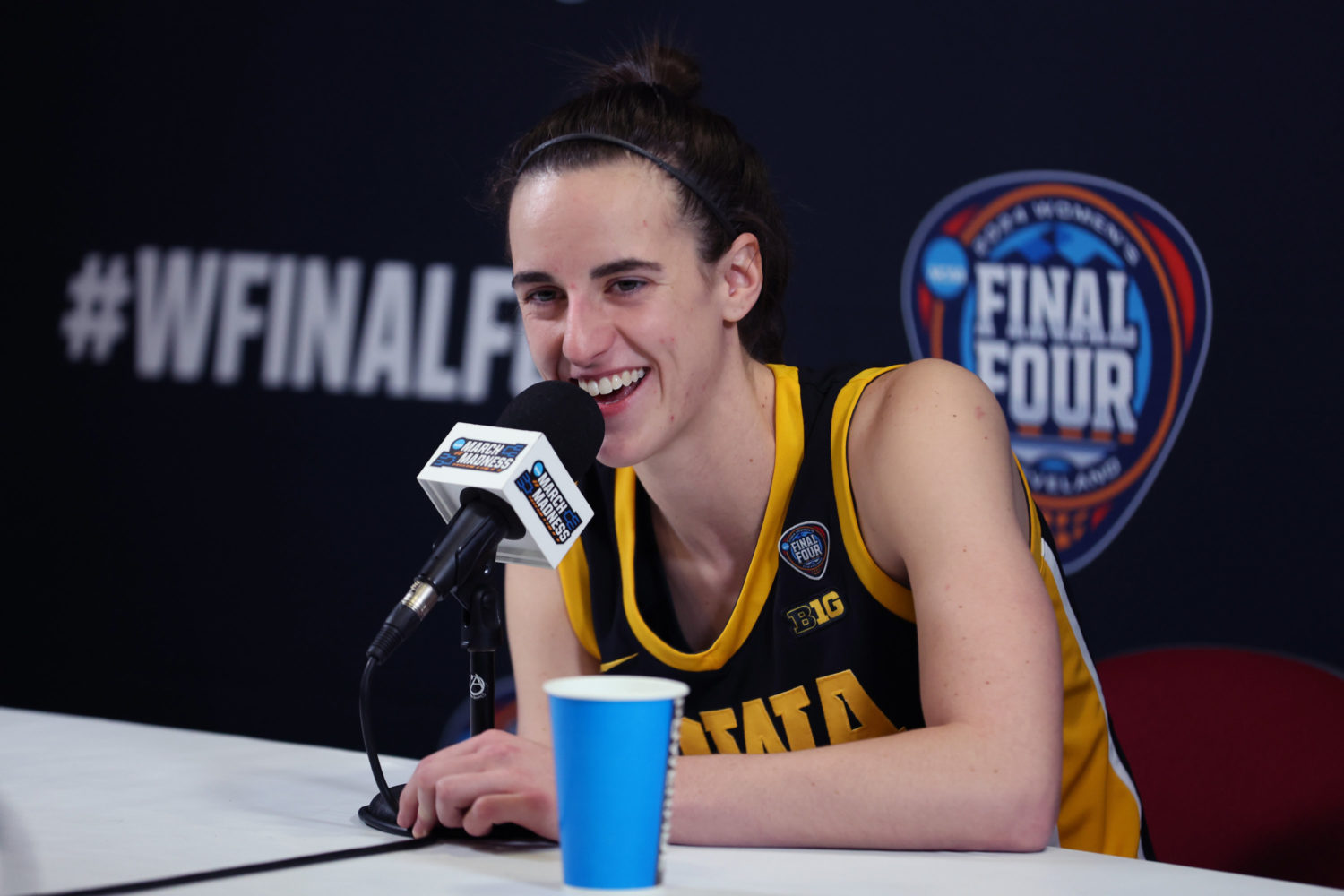One night last March, John Thompson Jr., Georgetown University’s legendary former basketball coach, made a recruiting call. Thompson hadn’t coached the Hoyas since 1999, but this wasn’t your average bit of college-hoops lobbying.
In 1981, Thompson had convinced a teenager named Patrick Ewing, then the top high-school basketball player in the country, to play for him. They won it all three years later. But now the powerhouse program they had built was struggling. Georgetown coach John Thompson III—Thompson’s son—had been fired. The school needed a replacement. So Thompson reached out to his old protégé. “You should put your hat in the ring for the job,” he said.
Much like in 1981, back when Thompson was trying to lure him to a school that was small fry among his NCAA suitors, Ewing was torn. At 54, he had spent most of his adult life in the National Basketball Association—first as one of the league’s greatest players, then as a well-traveled assistant coach. He had never considered college coaching. On the other hand, this was Georgetown—or as Ewing puts it, home.
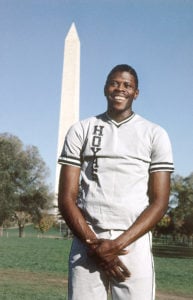
“Let me think about it,” he told Thompson. “Let me sleep on it.”
Ewing called friends and confidants, former Hoyas teammates and current NBA coaches. “Should I do this?” he asked. Over and over, he received the same simple response: “Why not?”
Six months later, Georgetown’s new head coach is sitting in a conference room decorated with trophies and basketball memorabilia, discussing a homecoming that’s more like a perpetual case of déjà vu. Black-and-white images of Ewing’s playing days feature prominently in the $61-million John R. Thompson Jr. Intercollegiate Athletic Center, which houses Ewing’s office and a practice court where his old number, 33, adorns the walls. Outside, freshmen are finding their way around campus; seniors are fretting about job interviews. “That was me, too!” he says.
Thirty-four years since leading the Hoyas to their only national title, the school’s most famous athlete has traded his sweat-soaked jersey-and-T-shirt combination for slacks and a sport coat. If it all seems too storybook—too full-circle—well, there’s a catch. Gauzy memories won’t beat Villanova. In rebooting the Ewing franchise, Georgetown has made a bet: that the embodiment of the school’s storied past can guide it into the future and make Georgetown basketball matter again in a city that has discovered plenty of other entertainments since the days when the Hoyas were the biggest game in town.
Judging from his demeanor, Ewing seems well aware of the stakes. His old freshman dorm, a cluster of apartments overlooking the Potomac River, is a five-minute walk from his office, but he’s yet to pay a visit: “I’m in grind mode. I’m in recruiting mode. I’m trying to get the guys to do the things we need them to do to be successful. I’m so busy with the job that I really don’t have time to sit back and be nostalgic.”
Other college stars have coached at their alma maters—Clyde Drexler at Houston, Kevin Ollie at Connecticut, Chris Mullin at St. John’s. None mean as much to their schools as Ewing does to his. When he chose to attend Georgetown over North Carolina and UCLA in February 1981, the Washington Post likened the occasion to both Christmas Eve and D-Day—only slightly hyperbolically.
Ewing led the Hoyas to the 1984 National Collegiate Athletic Association championship—and to fluky, heartbreaking title game losses in both 1982 and 1985. He was named a four-time Big East Defensive Player of the Year, a four-time All-American, a two-time All-Big East Player of the Year, and 1985 Naismith Player of the Year. He still holds school records for rebounds, blocks, and games played.
Ewing’s impact went beyond statistics. Until the early 1980s, college basketball largely had been a regional sport. As America fell in love with March Madness, Georgetown became a cultural phenomenon. Sportswriters likened Thompson and the Hoyas to Darth Vader and the Galactic Empire from the Star Wars films. Fans loved the Hoyas, or loved to hate them. Some of the animus stemmed from the school’s dominance, as Georgetown went 121–23 over Ewing’s four years. And some of it was racial.
He’s the Hoyas’ greatest star, but gauzy memories won’t beat Villanova.
Representing a predominantly white school, the Hoyas featured a black head coach, a black star player, and a mostly black roster. Like Thompson, the program neither apologized nor backed down in the face of ugly sentiment—not when opposing fans held signs calling Ewing an ape and wore T-shirts reading EWING KANT READ DIS and not when observers accused the private Jesuit university of selling its academic soul to admit basketball players from inner-city schools.
Of course, that only made Washington—a majority African-American city at the time—embrace the team more. Before Ewing’s freshman season, Georgetown moved its home games from 2,500-seat McDonough Arena to the 19,000-seat Capital Centre in Landover. The Hoyas sold more season tickets than the city’s NBA team, the Bullets. Silver Hoyas Starter jackets began showing up in movies and rap videos. Then–school president Timothy Healy told the Post that the team bridged the gaps among “feds and non-feds, rich, poor, established, non-established.”
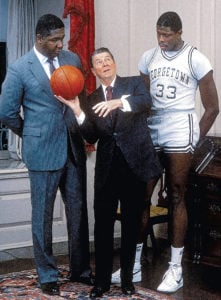
“It was DC’s team,” recalls Mike Jarvis, Ewing’s high-school coach and later the men’s basketball coach at GW. “People identified with them, especially in the black community. Georgetown wasn’t necessarily a school that a lot of people or their kids would go to, but there was a sense of pride, because of a black coach and a black star named Patrick Ewing.”
The team’s success transformed Georgetown’s identity, too. During the 1980s, the school set out to become what current president John J. DeGioia calls a “truly national research university” by building a new campus field house and student center, increasing its full-time faculty from 300 to 500, and offering full, need-blind financial aid. But it was basketball that really boosted the school’s profile. In 1984, Ewing, Thompson, and President Ronald Reagan shared the cover of Sports Illustrated, smiling and holding basketballs in the White House under the headline there they go again. Between 1983 and 1986, applications to Georgetown rose by 45 percent.
“There was a fantastic synergy between the strategy of the university and the success of the basketball team,” says DeGioia, who graduated from the school in 1979 and worked as assistant to former president Healy during the Ewing years. “They complemented each other.”
But over the last quarter century—with Georgetown’s place among America’s elite academic institutions secured—its basketball program slipped from prominence. The Hoyas reached the 2007 Final Four but subsequently suffered a cluster of NCAA Tournament losses to lower-ranked opponents. As the Hoyas sputtered to a 14–18 record last season, attendance plummeted. Fans chanted, “Fire Thompson!” at games. At the end of the season, the administration complied. “The team had become difficult to watch,” says Andrew Geiger, a Georgetown alum and the founder of Casual Hoya, a website that covers Hoyas basketball. “The hardcore fans were fed up.”
Such is the challenge facing Ewing: All college coaches work in pressure cookers; every last one is expected to win. But few helped create outsize expectations through what they did as players.
“You know what it’s about?” says Lee Reed, Georgetown’s director of intercollegiate athletics. “Where I get my hair cut, those guys have nothing to do with Georgetown, but they remember when we were really good, and they’re excited about Patrick Ewing. When the cabbies and the guys at the barbershops are talking about you, you’re doing okay. When they stop talking about you is when you’re in trouble.”
Coaching is a grind, a bottomless, antacid- filled pit of work and worry. You’re hired to be fired; you cram all week for your final exam, then watch helplessly as your players end up taking the test. “There’s a lot more frustration than satisfaction,” says ESPN analyst and former Knicks and Houston Rockets coach Jeff Van Gundy. “It’s just hard to win. Most of us do it because we can’t do anything else.”
Ewing never wanted to be a college coach. At Georgetown, he concentrated on winning games and graduating—the latter to fulfill a promise to his mother, Dorothy, a Jamaican immigrant who died of a heart attack before his junior season. As a professional, it was more of the same. He settled in Potomac during the off-seasons and focused on improving his body and game, taking along his infant son to his workouts on the Georgetown campus.
In 2002, nearing retirement from the NBA, Ewing had dinner with Michael Jordan—a fierce rival who became a good friend. Two years earlier, Jordan had bought a stake in the Washington Wizards and taken over the team’s basketball operations. He made Ewing an offer: Come to Washington. Give coaching a shot. I’ll create an assistant position for you. See if you like it—if you don’t, you can move to a front-office job and try that.
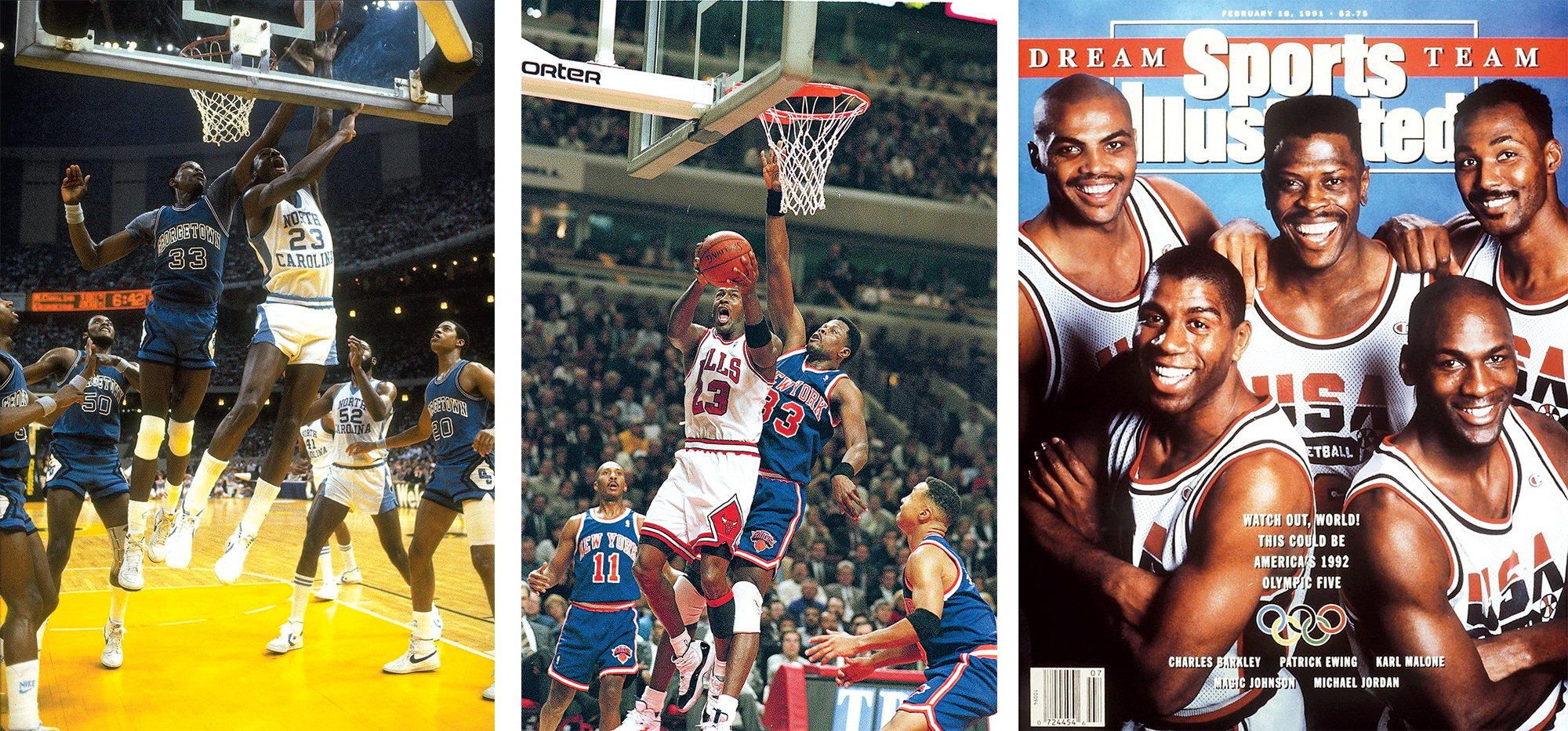
Ewing said yes. He moved into a condo at the Ritz-Carlton, spent his mornings working out at the attached sports club, and otherwise devoted himself to training the Wizards’ big men: Brendan Haywood, Etan Thomas, Kwame Brown, and former Georgetown center Jahidi White. Ewing discovered that he loved coaching—the game-planning, the film study, the jeweler’s attention to detail. Above all, Ewing loved sharing his old tricks with young players, which he likens to fatherhood: “A lot of times, when you’re trying to teach your kids things, they act as if they’re not listening. Then you’re watching them from afar, and you see them doing all of those things—and it’s like, ‘Oh—they’re finally getting it!’ That gives me a joy.”
Two summers ago, Ewing, working as an assistant coach for the Charlotte Hornets, interviewed for head-coaching vacancies in Sacramento and Memphis. Both teams hired other candidates. Former players with far less sideline experience—including Luke Walton in Los Angeles and Jason Kidd in Brooklyn and Milwaukee—have gotten top jobs. Why not Ewing? Some NBA observers fault the assumption that retired superstars make for mediocre coaches because the game came too easy to them. Others blame Ewing’s longtime aversion to revealing much of himself to the press and public, a wariness that traces back to his encounters with racism when he was a young player.
Even before he arrived at Georgetown, opposing high-school fans threw rocks at his team bus, called him a “monkey” and the N-word, and threw banana peels on the court. “At that time, there was forced busing in Boston, an effort to integrate schools, and a lot of white flight to the suburbs,” Jarvis says. “We were in the suburban league. We were a predominantly black team, and most of the teams we played against didn’t have black players—they were from areas with people who had fled the city. So there was a lot of tension. Teams would put football linebackers in the game to try to beat up on Pat. You could have three to four fistfights in a game and nobody would get thrown out. ”
“We sort of downplay what Patrick went through,” Van Gundy says. “We want to think that as a society, we would never do such heinous things. But we did, and he had to endure it. Has that made him a bit wary? Absolutely. But he has good reason.”
When Thompson called Ewing about the Georgetown opening, he brought up his former player’s long wait for a top NBA job. How long have you been an assistant? They haven’t given you an opportunity. Why not here? Well, for one thing, taking the job would mean that the things Ewing loved about coaching—the mentoring, the chess-playing—would have to be complemented by less sexy tasks, like wooing 18-year-olds and managing booster clubs. And Ewing still wanted a shot at coaching the world’s greatest players. But Georgetown was home.
During the interview process, Ewing spoke to school officials on the phone, laying out his vision for the Hoyas. His teams would run. Shoot three-pointers. Play pro-style basketball. He’d tailor his tactics to the talent on hand, the way NBA coaches do. Off the floor, Ewing would recruit nationally, competing with the likes of Duke and Kentucky; stress education, as Thompson had; and avoid scandal. Making the program a powerhouse would take time, Ewing said, but winning would come.
In high-school, opposing fans threw rocks and called him “monkey.”
Reed and others involved in Georgetown’s coaching search, including former NFL commissioner Paul Tagliabue, were impressed. “Patrick has always been our icon, the lovable guy who would give you a big bear hug, part of our family,” Reed says. “I literally used to call him Big Pat. But he really knew what he wanted to do with the basketball program, from the small details of his scouting reports to the way a door wasn’t closing all the way in the coaches’ office. We started to see Big Pat as Coach Ewing.”
In early April, Ewing’s team, the Hornets, flew from Oklahoma City to Washington. Ewing dropped off his bags at the team’s hotel—the same Ritz-Carlton he’d lived in while coaching with the Wizards—and took a car to Tagliabue’s downtown law office, where he met DeGioia. When he spoke to Thompson later that night, Ewing confessed that he didn’t think he would get the job. “It was just Jack’s facial expression,” Ewing says. “I couldn’t read it. He has a great poker face.”
“If I had a poker face, it’s just because I had a tough decision that night!” DeGioia says. “I didn’t want to presume anything. But I came away convinced that this was the Patrick Ewing I already knew—someone with a burning desire to win and who will work harder than anyone else.”
The next morning, the Hornets were boarding their team bus when Ewing’s phone rang. It was Reed.
“I heard you had a good meeting,” he told Ewing.
“I thought it went well, but—” Ewing said.
“You got the job.”
“Lee, don’t mess with me.”
“No,” Reed said, “you got it.”
Ewing stepped off the bus and told the driver to go on to practice without him.
During Ewing’s introductory press conference in early April, Thompson gave him a congratulatory hug. Soon after, he gave Georgetown’s fourth men’s basketball coach in 45 years some advice: Coaching is only 30 percent of the job. Seventy percent is other things.
After his press conference, Ewing had to meet with the members of his new team; take a test covering the NCAA’s myriad and byzantine recruiting rules; fly to Connecticut to persuade highly regarded recruit Tremont Waters, who de-committed from Georgetown in March, to give the Hoyas a second chance; and interview potential assistant coaches.
“In the pros, you deal with the team, you may have to deal with the [general manager], you may have to deal with some sponsors,” Ewing says. “But that’s pretty much it. In college, you’re the CEO. You’re dealing with professors, dealing with alumni, dealing with the press, dealing with your staff, dealing with the admissions people. You have to make sure your kids are going to class and not doing anything crazy in the dorms.”
Actually, the most onerous part of the job isn’t worrying about the players already on campus—it’s recruiting the kids still in high school. The best college coaches, says Steven Clifford, a former assistant at Boston University and East Carolina, are “recruiting nonstop. It’s the biggest piece, the biggest thing about college sports.”
Ewing’s own recruitment was tightly controlled by his parents and Jarvis, his high-school coach. “If you tried to bribe Patrick, if you thought gifts to him or any of us would get you Patrick, you wouldn’t have a chance,” Jarvis says. Times have changed. Today, wooing players means navigating a complex world of Amateur Athletic Union coaches and shoe-company representatives—a world in which an FBI investigation has produced evidence of six-figure payouts to recruits and bribery and corruption charges against assistant coaches at four different schools. The NBA’s “one and done” rule—which requires players to be either 19 years old or one year removed from high school before being eligible for the league’s draft—means top prep prospects often see college as a single-season pit stop.
Can Ewing successfully compete in the blood sport of recruiting, against rival coaches who have been at it for decades? Can he convince the top players in the talent-rich Washington area to stay home, something Georgetown was unable to do with the likes of current NBA players Kevin Durant and Markelle Fultz? Van Gundy thinks so: “I’m not one of Patrick’s best friends by any stretch, but he makes me feel like I’m his best friend. He makes people feel so good, so needed, so vital. I think that’s a unique talent.”
Back in the basketball conference room, I ask Ewing to give me his recruiting pitch. Let’s say I’m a young Patrick Ewing. You’re sitting in my living room. You want me to play for you.
“I can help you grow not only as a player but as a young man,” Ewing says. “Georgetown University was a great place for me. It afforded me the opportunity to not only develop as a basketball player but also to get a great education.”
So far, so . . . old-school. He sounds like Thompson—a coach who emphasized graduation and, over 27 seasons at the school, saw just two of his players leave early to enter the draft. But Ewing keeps talking.
“What I would tell that young Patrick Ewing is that everything you’re going to see I’ve seen. Everything you’re going to go through I’ve gone through. I can help you to develop and get you to the next level of where you want to get to.”
This is new. Today’s recruits want to play in the NBA as soon as possible. Who knows the league better than Patrick Aloysius Ewing? He throws back his head and laughs. Times really have changed.
“Now, in this day and age, a young Patrick Ewing is probably going to be a one-and-done!” he says. “He’s probably not going to be here very long!”
Among Georgetown diehards, the anticipation surrounding Ewing’s return is mixed with a sense of foreboding—that it signals less a new beginning than the last, dying gasp of the ancien régime. For better and for worse, the shadow of John Thompson Jr.—Big John—continues to loom over Georgetown basketball, and even the university itself. The 76-year-old, who declined to be interviewed for this article, is the program’s patriarch, a coach who took the Hoyas from a 3–23 record in 1972 to the top of the sport. He’s tight with DeGioia. He sits along the baseline at Hoyas home games. He has an office in the eponymous Thompson Center and a bronze statue in the lobby. When John Thompson III was coach, Big John could sometimes be found at the back of the room during his son’s post-game press conferences—and two years ago, he even interrupted an interview to blast the “terrible” officiating during a Georgetown victory over Creighton.
After Thompson III was fired, Sports Illustrated reported that some potential replacements hesitated because of the elder Thompson’s sway. “There’s a perception that at Georgetown you ultimately have to answer to Big John,” says Geiger. “So for the fan base, the excitement that comes with Ewing is kind of a mixed bag. Previously, we had JTIII on the court with his father in the background. Now we have Patrick Ewing with John Thompson in the background.”
Ewing is deeply loyal to his old coach. When a Providence fan taunted Ewing in 1983 with a sign that read EWING CAN’T READ THIS, it was Thompson who pulled the Hoyas off the floor. When Ewing’s mother died, it was Thompson who called his star player to his office to deliver the news. “This is not your normal great-player/great-coach relationship,” Van Gundy says. “John’s relationship with Patrick goes far beyond teaching him how to play low-post defense. If he had said, ‘Patrick, I don’t want you to do this,’ [Ewing] wouldn’t have gone back to Georgetown.”

Ewing acknowledges that both Thompsons encouraged him to pursue the job—telling him that if anyone should coach the Hoyas, it should be “someone in the family.” Still, he’s quick to assert that he’s his own man, and that while he spent four formative years under Thompson, he’s learned a lot about basketball since then from NBA coaches like Van Gundy and Pat Riley. “I have nothing but admiration and respect for [Thompson],” Ewing says. “I will listen to anything he has to say. But I have my own ideas and my own feelings. At the end of the day, I’m going to do things my way.”
Regardless of his pedigree, Ewing will be judged like any other coach—by how his teams perform on the court. On a mild October evening, Georgetown holds what amounts to a season-opening pep rally for its men’s and women’s basketball teams. Outside McDonough Arena, there’s a long line to enter; inside, there are shooting contests and T-shirt giveaways, chants of “Hoya Saxa!,” and reminders to use the hashtag #HoyaMadness on social media.
At the north end of the gym, one of the baskets has been replaced by a temporary stage, outfitted with speakers, video screens, laser lights, and a smoke machine. One by one, players from both squads are introduced with thumping music, gyrating their way across a makeshift runway.
“And now, the man in charge of it all, in his first season back on the Hilltop—the one, the only . . . .”
For a moment, it’s easy to see why Ewing has returned—and why Georgetown wanted him back. If everything goes just right, he can be a bridge between then and now, between tradition and evolution, allowing the school to move forward without moving on.
Ewing appears on the stage. Grinning sheepishly, he lifts his arms over his head, walks through the smoke, and leads his team in—wait, is this really happening?—an impromptu, decidedly old-man dance that has the players cracking up.
“It feels good to be back,” Ewing says, “where it all started for me.”
This article appears in the January 2018 issue of Washingtonian.
